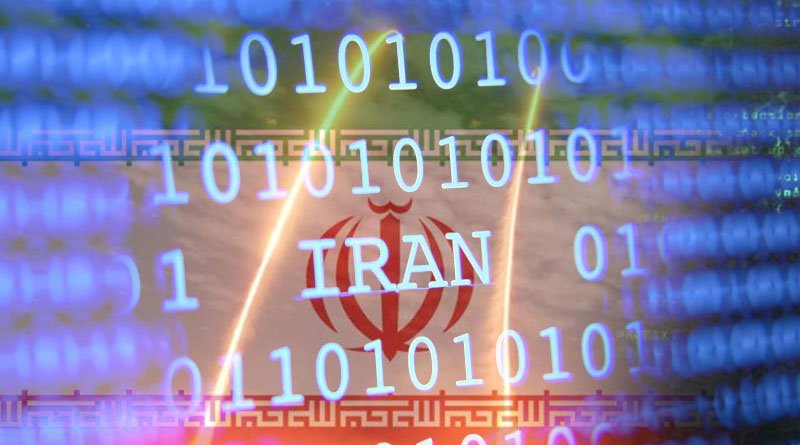Government of Iran allocated about $76 million for Iranian cybersecurity, but after the Stuxnet cyberattack on Iran’s nuclear facility in Nantaz, it increased about $1 billion.

When the world was busy with the Russian-Ukraine war, a massive cyberattack was carried out against Israel, which is supposed to be from Iranian cybersecurity force. According to Erez Tidhar, Executive Director – Head of Israel National CERT (Computer emergency response team), it was one of the biggest as the maximum number of institutions were under attack including the official websites of the ministry of health and several other websites as well.
The nature of the attack was neither sophisticated nor lethal. Iran and Israel were continuously engaged in cyber skirmishes. For the last two decades United States national security strategy focusing on Iran in terms of its nuclear program, human rights, women’s right, and terror sponsorship in the region.
The world was more focused on Iran’s nuclear program, while Iran has developed other capabilities as well. Iranian cybersecurity regarded as “Tier 3” level, which means that it has the potential to lunch cyberattack, which can disrupt, dismantle and steal confidential information.
The Stuxnet cyberattack on Iran’s nuclear facility in Nantaz, was considered an eye-opening and major blow to Iranian cybersecurity.
The Internet was created for human ease, but inclination for superiority turn it into an important tool for military purposes. However, the first-ever cyberattack carried out by any state was in 1998 just after four years of internet commercialization.
Cyberspace starts becoming important for military purposes only a decade ago. CIA cyberattack on the trans-Siberian gas pipeline within the Soviet Union carried out the first cyberattack. Malicious malware was used to carry out the attack.
While looking at the history of the internet and its importance in the military field make it essential for Iran as well. Historically, Iranian cyberspace is used for legitimization, and control of the domestic uprising, protests, and political upheavals.
In early 2005, IRGC (Islamic Revolutionary Guard Corps) created a cyber-army, which mostly focuses on Iran’s internal threats. However, before Stuxnet cyberattack, Iran was only concentrating on a domestic issue. The Stuxnet attack was considered a watershed, which realizes Iran that its interests are under attack.
Iran starts expanding its cyber capabilities with the creation of the Supreme Council of Cyberspace, which included personnel from media, intelligence, security, and other departments. The main objective of this council is to protect the regime’s computer network, filter the information, and attack the enemy system.
Moreover, another department name “Bashir” in the Persian language, was created under IRGC command, which focuses on the external cyber threat to the regime.
According to a report by a Reporter Without Border, Iran has built a cyber system like China’s great wall which 24/7 watches their citizen, and their activities, and had cyber police FETA that typically deals with virtual crime political, social, and economic.
Government of Iran, allocated about $76 million for Iranian cybersecurity in shape of cyber force but after the Stuxnet, it increased about $1 billion to latest technology, recruitment of experts (from 2018 to 2022 IRGC hired about 120,000 cyber experts), and infrastructure.
In 2013 IRGC openly claim that Iran has the fourth-largest cyber force. IRGC is a state within a state that has its cyber force, command and control, which recruit, train, spy, and spread fake news and propaganda.
Moreover, IRGC also develops different cyber defense products which according to them are secure from any cyberattack these products includes, cell phones; operating system; navigation system; telecommunications optical transmission system; anti-malware; cyber threats recognition and identification system; security operations center; a high-speed and high-capacity firewall and a software firewall.
Additionally, Iran has developed quite remarkable cyber capabilities which not only secure their cyberspace but also deter Israel and US.
Iran over a period of time continuously improved its cyber capabilities and invested in infrastructure, modern technologies, and new methods to secure its cyberspace and attack its opponent.
Iran’s cyber activities, especially against US and Israel, are improving quite a lot the example Iran’s cyber intelligence hacked into the Israeli defense system, steal, leak confidential information about its military chief, and hacked into the Benny Gantz cell phone.
Pakistan is a developing country and its reliance on the internet has been increasing rapidly for e-governance, which increases its vulnerability to cyberattacks because of poor understanding of cyberspace, lack of preparedness, and hostile regional situation.
Pakistan is ranked among the top 10 countries booming digitally in UN Trade and Development, in the information economy and 365 million Pakistanis have access to the internet most of them 3G and 4G users are more vulnerable to cyberattack.
Since, Iranian cybersecurity is a prime concern for its government, they are investing a lot to rise as a cyber power in the region. Pakistan and Iran should cooperate in the cyber dimension to address common interests like cyber radicalization, cyberterrorism, and religious extremists.
